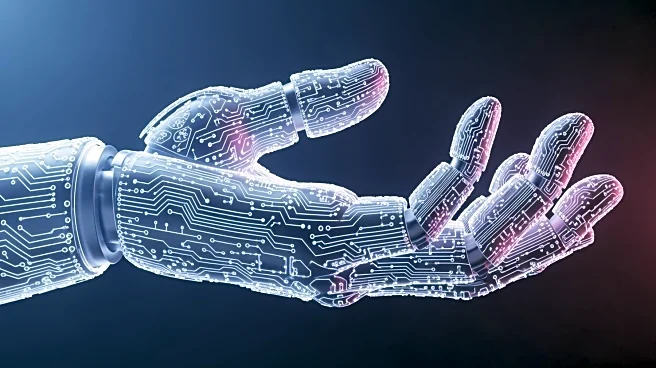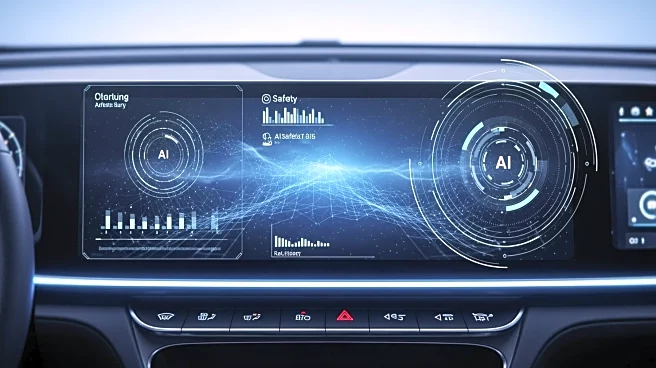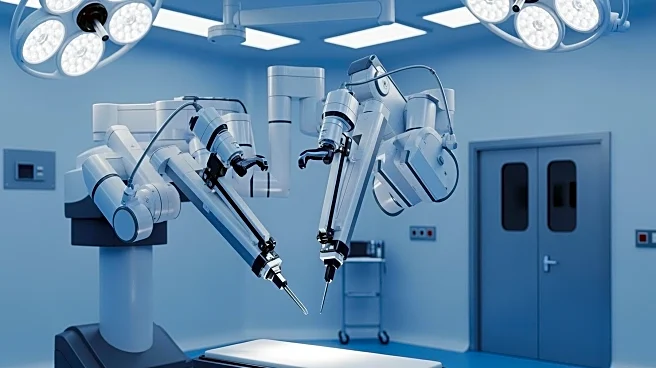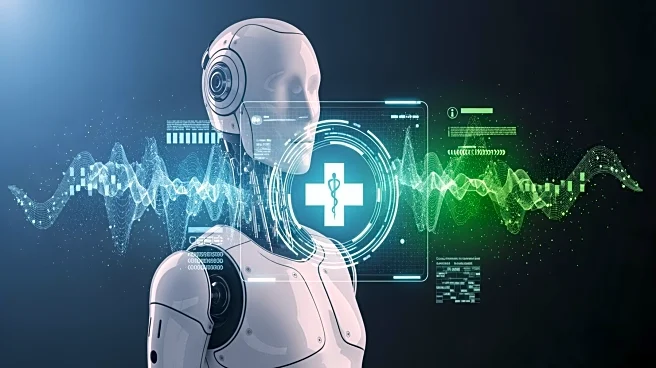What's Happening?
A new study has introduced an L-SHADE optimized learning framework for surface electromyography (sEMG) hand gesture recognition. The research involved applying ten machine learning algorithms to classify
hand gestures based on sEMG signals. The study focused on optimizing hyperparameters to improve the accuracy of gesture recognition. The Extra Tree (ET) classifier, when optimized with L-SHADE, achieved the highest accuracy among the tested models. The framework was validated using both self-acquired and publicly available datasets, demonstrating improved performance and generalizability. The study highlights the importance of hyperparameter tuning in enhancing machine learning models for biomedical applications.
Why It's Important?
The advancement in sEMG hand gesture recognition has significant implications for prosthetic technology and human-machine interaction. By improving the accuracy and efficiency of gesture recognition, this framework can enhance the functionality of prosthetic limbs, making them more intuitive and responsive to user commands. This could greatly benefit individuals with limb loss, improving their quality of life and independence. Additionally, the framework's application in teleoperation and other human-machine interfaces could lead to safer and more effective control systems in various industries. The study underscores the potential of machine learning optimization in advancing biomedical technologies.
What's Next?
Future research will likely focus on further refining the L-SHADE optimized framework to enhance its performance across different datasets and real-world scenarios. Collaboration with prosthetic manufacturers and healthcare providers could facilitate the integration of this technology into commercial products. Continued exploration of hyperparameter tuning techniques may lead to even greater improvements in machine learning models, broadening their applicability in other areas of biomedical signal processing. The development of user-friendly interfaces and training protocols will be essential to ensure the practical adoption of this technology by end-users.
Beyond the Headlines
The study raises important considerations regarding the ethical use of machine learning in healthcare. Ensuring data privacy and security will be crucial as these technologies become more integrated into medical devices. The potential for machine learning models to adapt and learn from user interactions also presents opportunities for personalized healthcare solutions. However, this adaptability must be balanced with safeguards to prevent misuse or unintended consequences. As the technology evolves, regulatory frameworks will need to adapt to address these challenges, ensuring that innovations are implemented safely and ethically.











